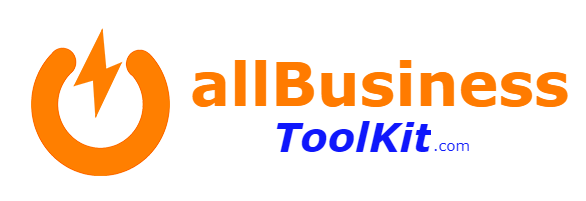Off-Page SEO is definitely one of the most painful tasks when trying to rank your website in the Google search engine results page (SERPS). The good news is that there is many ways to approach it…
Off-Pafe SEO Definition – Off-Page SEO is building your website authority through gaining back links to your web pages. It is important to have a high authority score because this shows that your website and your content are trustworthy by other sources.
1. What Is Off-Page SEO?
Off-Page SEO is setting out activities that are outside the borders of your website.
These activities involve:
Link building – Building a domain authority score from good quality websites
Link maintenance – This is ensuring legitimate sites are linking to your site and block the ones that are not
Building brand awareness – Getting the message out about your new products and offerings
Paid advertising – Getting direct traffic from channels outside your influence
Social media marketing – Building a community and a social influence
Guest posting – This is reaching out to other peoples audiences to extend your own customer base
Seminars, Webinars and Vlogs – These are the best ways to establish your knowledge in the industry and teach people of your expertise
Engaging in Forums – help people online, search and get to know what people’s problems are and leverage this knowledge to enhance your On-Page SEO
Bookmarked on social and chrome – Google can view how many times your website has been bookmarked.
2. Why is Off-Page SEO Important?
Google has an aim to deliver the best search results to their users.
This means the result that best matches the users query providing the best information to that user.
In the SEO world we describe these factors as user intent and user experience.
However, it is a very difficult task to assess which web pages meet these criteria and to do this you must consider the niche your aim to serve, the site optimisation, on-page SEO and Off-Page SEO.
In the realm of off-Page, SEO Google tracks the websites that point to your website and give you a domain score.
If you have many quality resources that point towards your web pages the better the website score.
Off-Page SEO indicates how the World perceives your website.
This means, generally a quality site will have more links and mentions from other sites.
3. Off-Page SEO Landscape
Off-Page SEO is one of four areas in the realm of getting your website appear in the search results.
There are four pillars of SEO (demonstrated in the below image), which make up the whole optimisation process.
The other areas include niche marketing, Site-Level SEO, and On-Page SEO.
3.1 Four Pillars of SEO

As you can see, Off-Page SEO is the last in the whole SEO infrastructure.
4. Link Building Activities for Off-Page SEO
4.1 Backlinks and domain age
Gaining back links from domains are older are considered as more trustworthy. Because the website has been around for a long period shows it is legitimate, as they have avoided any black hatting in the past.
4.2 Linking from root domain
A root domain always supplies the highest prioritised content on a person’s website, and it always kept most up to date (generally).
This means if you get back link juice from portion of root domains means Google consider that link of more value than links further down the level of the website.
4.3 Number of referring links from separate domains
The more people that link back to your website the better, unless they are spammy websites and have been penalised.
4.4 Link stacking with online partners
Partnerships are often formed between websites.
It is common once this alliance if formed these sites link to each other.
Google rewards those sites that have these links, however if it seems spammy like your trying to game the system then Google will detect this.
4.5 Link stacking to website on the same server
If you own your own server and have many of your sites stored on it you may be tempted to link stack.
The problem here is that all those websites on the same server share the same C Class record.
Google may punish you by links stacking from websites on the same server as it tells Google you may be trying to game the system and these links are not happening naturally.
4.6 Total number of links to a page
The number of referring links to a page may have, even from the same domain will have a positive effect on rankings.
4.7 Backlink anchor texts
Anchor texts is the line of text you choose to highlight when you attach a link to it.
Having keywords that appear in the back link anchor text signals to Google that this link is relevant.
However, Google also monitor anchor texts and they check the density of words people are using to link through.
If your keyword appears abnormally amongst anchor text globally across the internet then Google may question the legitimacy as it is not natural to be anywhere over 5%.
4.8 Links from .edu or .gov Domains
It is commonly assumed that top-level domains that the .edu and .gov is considered as more important extensions that may get a slight boost in the rankings.
However, Matt CUTTS states otherwise…
4.9 Linking to high authority pages
Linking to pages that hold a high authority is a ranking factor according to Google support.
4.10 Being referred by a website with higher authority
Building back links is a very tricky task and some websites do not like to link out.
Finding that website with a high domain authority that like to link out can take time and effort.
However, these sites will build your authority.
You want to get websites with high authority to link out to you unconditionally.
The best way of doing this is having the best content on your website they cannot refuse to tell their audience about.
4.11 Being referred by competitors
By having links, from websites in the same industry tells Google your website is relevant to keyword that relate to that industry.
This goes back to the Entity Based Search, which improves your chances for hitting that rank zero.
4.12 Being referred by what Google thinks are “Expected” Websites
It is a common assumption that your website should be referred by those known sites in that industry you operate.
4.13 Links from black hat website
If a website has been hit with a penalty because of suspicious black hat activity, then Google considers these as illegitimate and it may harm your ranking.
You want to make sure to no follow these links.
4.14 Guest Posting
Guest posting can be great to reach out to a completely new audience.
However, Google does not particularly like this and if you do this on a large scale may get your website un-indexed.
4.15 Follow, or, ‘No follow’ Links
You want to make sure you no follow links from websites have low domain authority, as Google does not trust these.
However, if you No Follow a link with legitimacy then you will not get any of that good linking juice credited to your domain.
4.16 Links From Ads
Google are able to identify links to adverts and so these are not 100% necessary to No Follow.
4.17 Link stacking Vs link diversity
Having a massive amount of links coming from a single source could be deemed as unnatural and a sign of web spam. Links from multiple sources is a sign of natural linking.
4.18 Sponsored links
Having links that point to sponsors may decrease the value of a link, as this is more of an arranged business agreement.
4.19 Links found in content
Links embedded content is more powerful than links on an empty page.
4.20 Contextual links
Links pointing to a page within similar theme is considered more valuable than those that do not share a common theme.
4.21 301 redirects
Not all traffic naturally flows through 301 redirects so this can dilute the amount of traffic flow.
About 85% of traffic is able to filter through 301 redirects.
Thus, you are missing 15% of traffic juice from that link.
4.22 Referring relevance
Being linked by a page that is relevant to your theme is a sign of relevance.
4.23 Linking Relevancy
Linking to a website that is similar to the themes of your website is more powerful as they are related.
4.24 Referred by Country TLD extension
If you are being referred from a majority of .cn, .co.uk, .eu, .de and others may increase your ranking in that country.
4.25 The location of the link on the page
According to Moz, Links that are located toward the top of the page may be more powerful than links at the bottom of a page.
4.26 Location of the link element
Links that are located in content are more important than links in sidebars, footers and headers.
4.27 Link hover text
The link title is the text that appears when you hover over a link, which is a weak ranking signal for relevance.
4.28 Links with a Keyword in the Title:
Google likes pages that contain keywords in the title of the links.
4.29 Velocity of links towards a page
A site with increasing links with in a short time period will get a SERP boost as it demonstrates increasing popularity or trend.
Pages that have the opposite effect such as, if your page is losing velocity may have less priority than those that are increasing velocity.
4.30 Being referred by top resources
Websites that are considered as hubs or are significant in their industry.
Links from these sites (like Forbes) will be given priority over links from sites with higher domain authorities.
These are often known as authority sites (nothing to do with domain authority) and will likely pass more juice to your site as these are generally more popular in the industry.
4.31 Wikipedia backlink
Wikipedia no follow all their links so you will not get credit for the link.
However, if that links bring traffic to your website may have a positive effect.
4.32 Co-Occurrences
Moz says that co-occurrence define the topic of your back link as it includes related words and so related words around your links may give you a boost.
4.33 The age of a Backlink
According to Searchengineland, Older links hold more priority over newer links.
4.34 Links from Splogs
The sole purpose of splogs is to create links to other associated websites, which are spammy.
This is a form a black hatting and Google can identify these sites by the interaction signals and branding.
4.35 Natural Link Profile
A site that has been previously done for black hatting to build links will be more durable to new Google updates.
4.36 Excessive link stacking
Google says avoid excessive link stacking as it will provide a bad user experience.
4.37 User Generated Content Links
Google can tell the difference from links that are published from the site and those links that are in the comments section of a website. Links hold more value when published by the owner.
However, they do hold a very small backlink juice if relevant.
4.38 Links from pages with Markup-Schema
Mark-up Schema is used to help Google search engine to understand all the different elements on that page and across the whole website.
The schema comes in various formats such as micro formats (like JSON)
When implemented Google can indicate what the site is about.
This means it will appears to be more relevant in the SERPS as well as displaying different elements in the search to significantly increase CTR and reduce bounce rate.
3.39 Number of Outbound Links on Page
Pages that pass on many outbound links will pass on more link juice than those pages with a small amount of outbound links.
This means it is good to get a back links for external web pages with only few links on that page.
3.40 Forum Links
Google do not hold as much value to those links from forums.
3.41 Word Count of referred content
Getting links from a post with high word count is a sign of quality.
A link from a page with a 1000 words is more valuable than a link from a page with 100 words.
3.42 Quality of Linking Content:
Links coming from a referring domain with poorly written content don’t pass much value.
3.43 Site wide Links
Site wide links are links that come appear in multiple areas of a website at once (such as menu links).
Matt Cutt says these only count as 1 link on a website and so do not have any added value.
4.44 Trust Rank of Linking Site:
Sites that are trustworthy pass on higher link juice and trustworthiness. Therefore, Trust Rank is passed on to your page.
5. Off-Site Web Spam Factors
In this secion I go over all the tqcts people use to try and game googles algorithm.
Since the penguin update Google is able to assess which websites are trying to trick the system to gain rankings. Sites are hit by the penguin feature because of this have less authority and less visible in the search results.
There is also some speculation that Google doesn’t just punshing the spammy webpage anymore. But, they now punish whole websites.
5.1 Unnatural Influx of Links
If a websites suddenly experiences thousands of links pointing to a website overnight, is a sign that the website owner has purchased these links from third parties.
Google doesn’t accept a website to purchase links for third parties as a website has to earn the links they get from providing a good user experience.
However, it is common for content to go viral overnight and out of control because exceptionally awesome story or video.
There are many ways google can measure the difference between viral content and foney links. But, no one knows for sure.
So, you just have to be mindful.
In addition, Google will have been known to send out messages in google search consoler warning that they have detected unnatural links.
This will be then followed by your website experiencing some drop in the search engine results page. But, not ll of the time..
5.2 Low Quality Links
SEO marketers that conduct black hat SEO will undoubtedly have a big network of websites.
Many of these websites will be empty and they are just there for backlink juice to other sites that they are trying to hack.
Google tracks low quality links by the domain authority score, which is measured by the quality of backlinks pointing to your site.
If all your links are of low quality then it is a sure sign of trying to hack the system.
This can also make it problematic if you go around commenting on blogs and other less quality sites which your domain link attached.
If you do this for traffic to your website then again you have to be mindful you sre not spamming.
According to Google, baclinks from low-quality directories can lead to a penalty.
5.3 Links from websites on the same server
Websites on the same server share the same IP address.
If you get an unnatural amount of links from websites on the same server could indicate an attempt to game the system.
5.4 Backlinks from relevant Domains
MicroSiteMasters.com conducted research whereby they where trying to find things that get websites caught by the penguin uopdate.
They found that if your website has a lot of links from unrelated websites then increases your chance to get hit by a penalty.
By having sites with links that are irrelevant to the topic show low quality sites.
This makes it important to manage your back links, even if you are not black hatting and no follow those links that point to your wbesite with low domain authority.
A 2013 Google Patent describes how Google can identify whether or not an influx of links to a page is legitimate.
5.5 Widget Links
Google frowns on links that are automatically generated when user embeds a “widget” on their site.
5.6 Selling Links
Getting caught selling links can hurt your search visibility.
5.7 “Poison” Anchor Text
Having “poison” anchor text (especially pharmacy keywords) pointed to your site may be a sign of spam or a hacked site. Either way, it can hurt your site’s ranking.
5.8 Links From Articles and Press Releases:
Articles directories and press releases has been abused to the point that Google now considers these two link building strategies a “link scheme” in many cases.
5.9 Manual Actions
There are several types of these, but most are related to black hat link building.
5.10 Temporary Link Schemes
Google has caught onto people that create — and quickly remove — spammy links. Also know as a temporary link scheme.
6. Penalties
6.1 Google Sandbox
New sites that get a sudden influx of links are sometimes put in the Google Sandbox, which temporarily limits search visibility.
6.2 Filtered out
6.3 Panda Penalty
Sites with low-quality content (particularly content farms) are less visible in search after getting hit by a Panda penalty.
6.4 De-indenxed
6.5 Dropped from search
6.6 Disavow Tool
Use of the Disavow Tool may remove a manual or algorithmic penalty for sites that were the victims of negative SEO.
6.7 Reconsideration Request
A successful reconsideration request can lift a penalty.
However, it is also said that google now focus towards filtering out bad websites rather than penenalising entire websites.



![Customer Journey [2020 UPDATE] From Visitor To Purchase Customer Journey [2020 UPDATE] From Visitor To Purchase](https://allbusinesstoolkit.com/wp-content/uploads/2018/04/Customer-Journey-Definition.jpg)
![Market Research? BEST [Methods] For Data Analysis! Market Research? BEST [Methods] For Data Analysis!](https://allbusinesstoolkit.com/wp-content/uploads/2018/12/google-76522_960_720.png)
